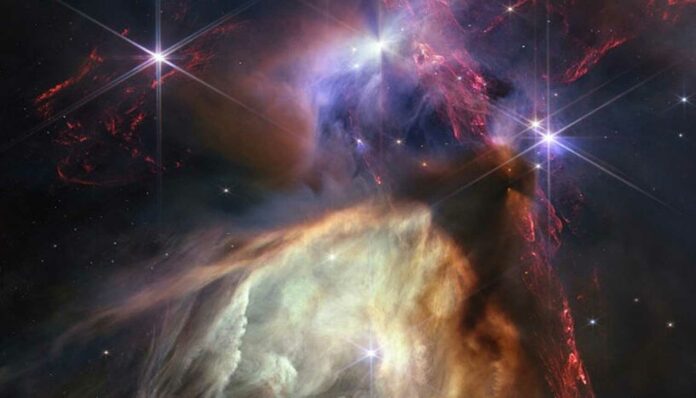One of a star’s most important characteristics is its age, but figuring out what that means involves modeling many different parts of its creation and development. Until now, the most accurate estimates for “star clusters” have been found.
As part of a research project at the University of Vienna‘s Institute of Astrophysics, the ages of six relatively young and close star clusters have now been examined. It was discovered that isochronous measurement and dynamic tracing, two of the most trustworthy techniques for estimating a star’s age, differed consistently and methodically: Compared to the isochronous measurement, the stars were approximately 5.5 million years younger using the dynamic tracing method.
Astrophysicist Núria Miret-Roig from the University of Vienna, the first author of the study, said, “This indicates that the two measurement methods measure different things. According to the new study, the isochronous “clock” starts ticking from the time of star formation, but the “clock” of dynamic backtracking only starts ticking when a star cluster begins to expand after leaving its parent cloud.”
João Alves, co-author, and professor at the University of Vienna, said, “This finding has significant implications for our understanding of star formation and stellar evolution, including planet formation and the formation of galaxies, and opens up a new perspective on the chronology of star formation. For example, the length of the so-called “embedded phase.””
The disparity in age between the two techniques offers a novel and crucial instrument for measuring the initial phases of a star’s existence. It can be used, in particular, to gauge how long it takes the baby stars to depart from their nest—high-resolution data from the Gaia special mission combined with ground-based radial velocities allowed for the measurements.
Miret-Roig said, “This combination allows us to trace the positions of stars back to their birthplace with the accuracy of 3D velocities. New and upcoming spectroscopic surveys such as WEAVE, 4MOST, and SDSS-V will make this investigation possible for the entire solar neighborhood.”
Since astronomers understood the function of stars, they have been isochronous ages. However, these ages depend on the particular stellar model being used.
Thanks to high-quality data from the Gaia satellite, scientists can now measure ages dynamically, independently of the stellar models.
The astrophysicist said, “During the calculations, however, a consistent and puzzling difference emerged between the two age determination methods. And eventually, we reached a point where we could no longer blame the discrepancy on observational errors – that’s when we realized that the two clocks were most likely measuring two different things.”
Six young and close star clusters—up to 50 million years old and 490 light years away—were examined for the study by the research team. It was determined that the embedded phase’s time scale was around 5.5 million years (plus or minus 1.1 million years) and that it might have varied depending on the star cluster’s mass and the quantity of stellar feedback.
This novel approach could obtain fresh information about star formation and stars drifting apart on other young, close-by star clusters.
Miret-Roig hopes: “Our work paves the way for future research into star formation and provides a clearer picture of how stars and star clusters evolve. This is an important step in understanding the formation of the Milky Way and other galaxies.”
Journal Reference:
- Núria Miret-Roig, João Alves, David Barrado, Andreas Burkert, Sebastian Ratzenböck & Ralf Konietzka: Insights into star formation and dispersal from the synchronisation of stellar clocks. Nature Astronomy. DOI: 10.1038/s41550-023-02132-4
